In the cadenzas Beethoven wrote for his C-Major Piano Concerto, opus 15, higher high-notes are utilized than those in the concerto itself. The cadenzas were written down around 1809, more than a decade after the concerto.
 When you add on a new room to your house you may use the same materials as the original construction, but whether using the same materials or not, you’re likely to utilize current technology in doing the construction. Architectural juxtapositions that result from additions are part of our understanding of buildings used and remodeled over time.
When you add on a new room to your house you may use the same materials as the original construction, but whether using the same materials or not, you’re likely to utilize current technology in doing the construction. Architectural juxtapositions that result from additions are part of our understanding of buildings used and remodeled over time.
Piano-making developed in the years between the first performances of Beethoven’s C-Major Concerto and the notated cadenzas. Later keyboards included higher notes. For the performer, aesthetic questions arise.
I can’t say for certain why Beethoven notated these cadenzas. For his own use? Doubtful. He would have elaborated, embellished, ornamented further, or anew in a performance. Did he write them down for an amateur to play? Some believe they’re for Archduke Rudolf. Beethoven’s reason for writing these cadenzas is less obvious — than in the case of cadenzas 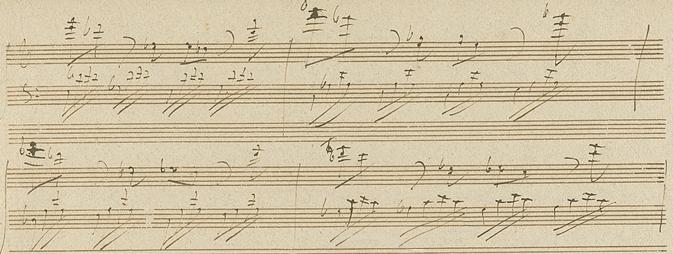 Mozart sent to his sister, or wrote for students who gave public performances. Beethoven’s written cadenzas are a recording of his improvising. Not a sound recording, but a recording no less. Perhaps these pages are just to help in remembering good ideas? (Perhaps that is the reason all written-music is written?)
Mozart sent to his sister, or wrote for students who gave public performances. Beethoven’s written cadenzas are a recording of his improvising. Not a sound recording, but a recording no less. Perhaps these pages are just to help in remembering good ideas? (Perhaps that is the reason all written-music is written?)
Within the C-Major Concerto, I like to avoid playing notes above the high F (now signified F6) that was the normal upper-endpoint of Viennese keyboards in the late 18th century. As a kid, learning the concerto from Franz Kullak’s edition, I read a high F-sharp in the concerto’s second theme, a half-step higher than that high endpoint F:
Surely Beethoven would have preferred this leading-tone F-sharp if it was available, an editor might have reasoned? (The composer certainly wrote the F-natural though.) In the second appearance of this passage, in C Major, and in a slightly lower register, we do find the raised leading-tone B-natural.
Many pianists and conductors endorse the F-sharp, this rereading/modernization/modification/improvement. Let’s notice some of the details of the orchestration in the C-Major and G-Major presentations of this music.
In the G-Major version as it was written, the piano does not have raised leading-tone F-sharp, and the music played by the strings avoids the issue — no discrepancies, no questions.
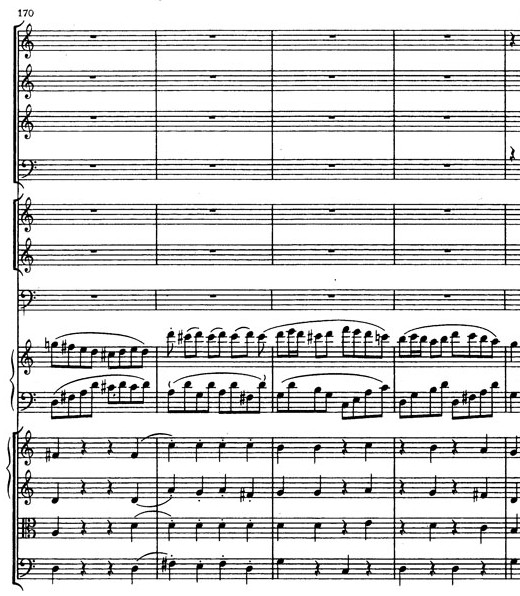
In the C-Major version, the orchestra’s music is quite different. Along with the piano’s leading-tone B-natural, there are sustained lines for cellos, violas, and first violins. The second violins have a repeated C. This is in considerable contrast to the open, more neutral texture of the G-Major statement of the theme.
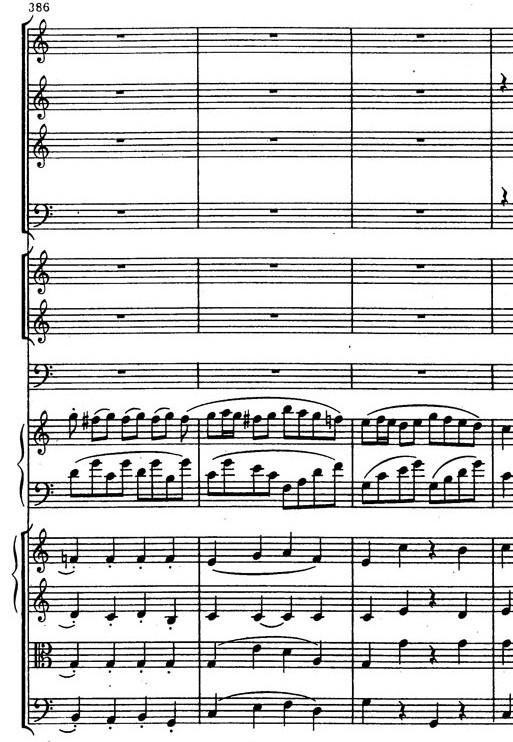
If a pianist decides to play the high F-sharp in the first statement of this theme, shall we also rewrite the concerto’s string parts? As it is written, these changes provide subtle development/evolution of the material.
Within the text of the cadenzas to the First Concerto, awareness or even mocking of the register expansion/change/mismatch may be discerned. Starting from the customary, humdrum high-F, this scale makes a cheeky ascent:

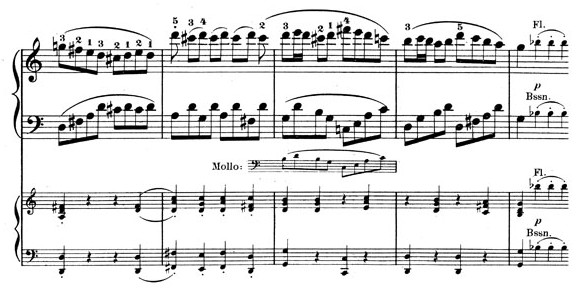
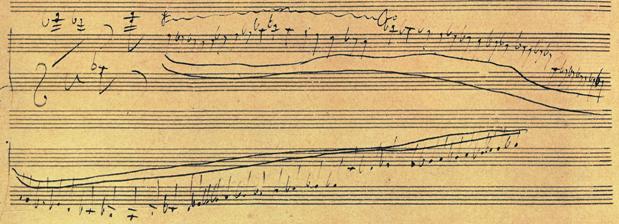
Beethoven was a master of music composition, without a doubt. His written pieces are amazing people today and will probably amaze many generations to come. In my opinion, Beethoven along with Mozart are two of the most sophisticated musicians that humanity has seen. This doesn’t mean that the future couldn’t bring a composer that could get close to their mastery of music.